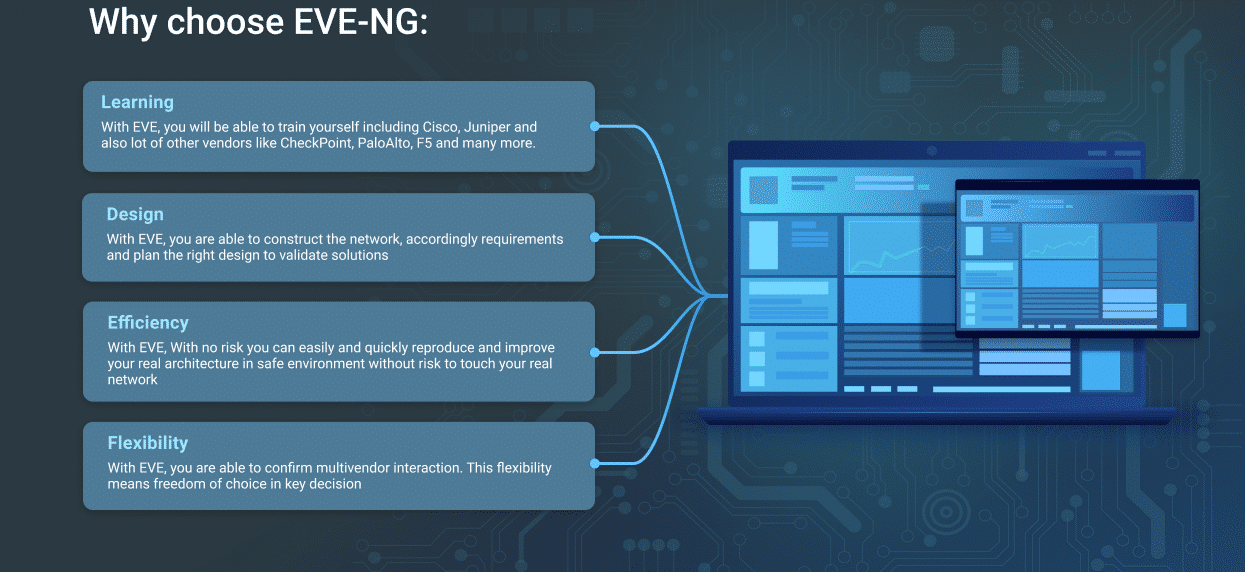

EVE-NG installationĪll right, it’s time to install EVE-NG. Also, map the CD/DVD drive to the EVE-NG ISO image you uploaded to the datastore:Ĭlick on Next and Finish, then power on the virtual machine. Don’t forget to add network cards that map to your port groups. You can set the hard disk as “thin provisioned” because it probably won’t really use 100 GB of storage. The vManage controller requires a 100 GB hard disk so make sure your EVE-NG virtual machine has plenty of storage. You need more than that because we need to run vEdge routers and some “regular” IOS devices. You need at least 19 GB of RAM and 6 vCPUsto run the Cisco SD-WAN controllers. Don’t be shy with resources, you’ll need them.

Now we have to customize our virtual machine hardware.

Set the Guest OS family to Linux and the Guest OS version to Ubuntu Linux (64-bit). Now we need to configure some parameters: Go to Virtual Machines in the Navigator:Ĭlick Create / Register VM and select Create a new virtual machine: It’s also nice that we can use Wireshark if we ever want to look at our traffic. We need this because the EVE-NG virtual machine creates different MAC addresses for the virtual devices. Make sure you change the security options to Accept on all port groups: These cloud icons are useful for SD-WAN because we are going to use them to simulate different WAN connections. Each of the port groups uses a different VLAN. We can use these to bridge virtual devices to our physical network. The other three port groups connect to different “cloud” networks that we can use within EVE-NG. We use this so we can access the EVE-NG GUI or access it with SSH. The first port group (LAB) connects to the eth0 interface of the EVE-NG virtual machine. Port Groupsīefore we create the virtual machine, we need to create some additional port groups.

Let’s create a virtual machine for EVE-NG. Copy the ISO image to the datastore of your VMware ESXi server. The professional version requires a license but it’s definitely worth the money.


 0 kommentar(er)
0 kommentar(er)
